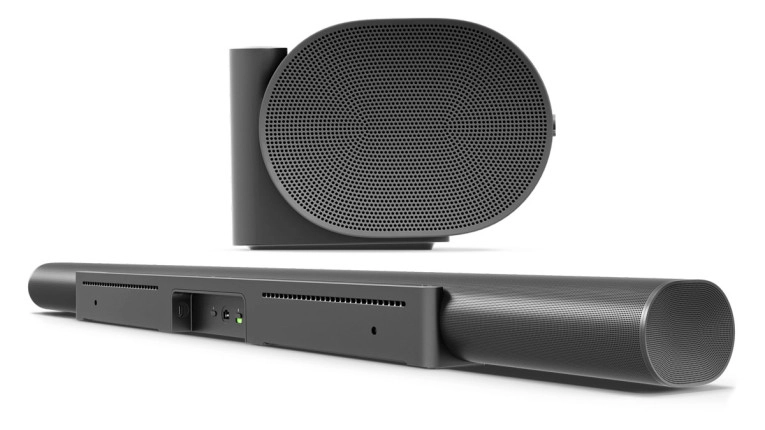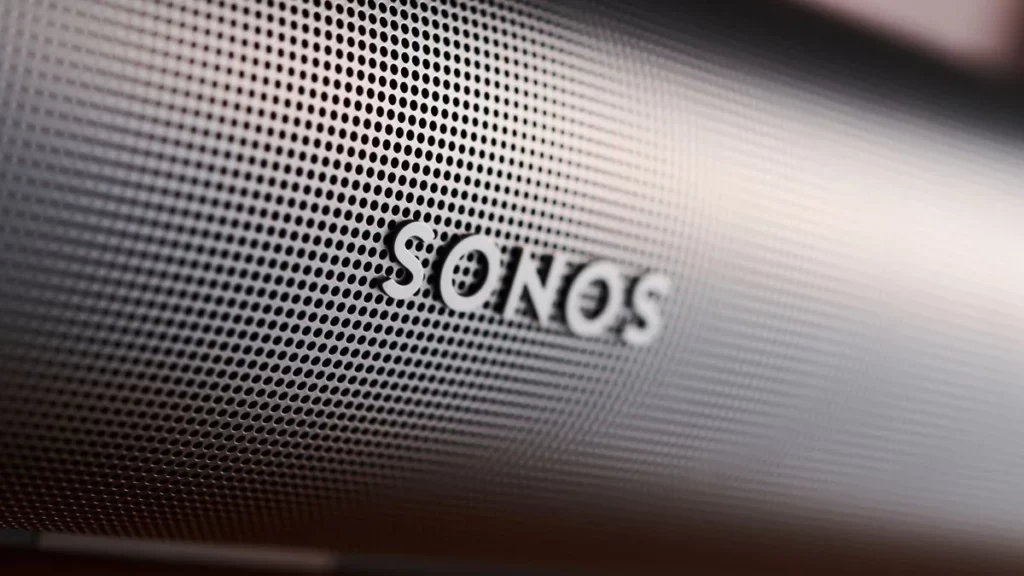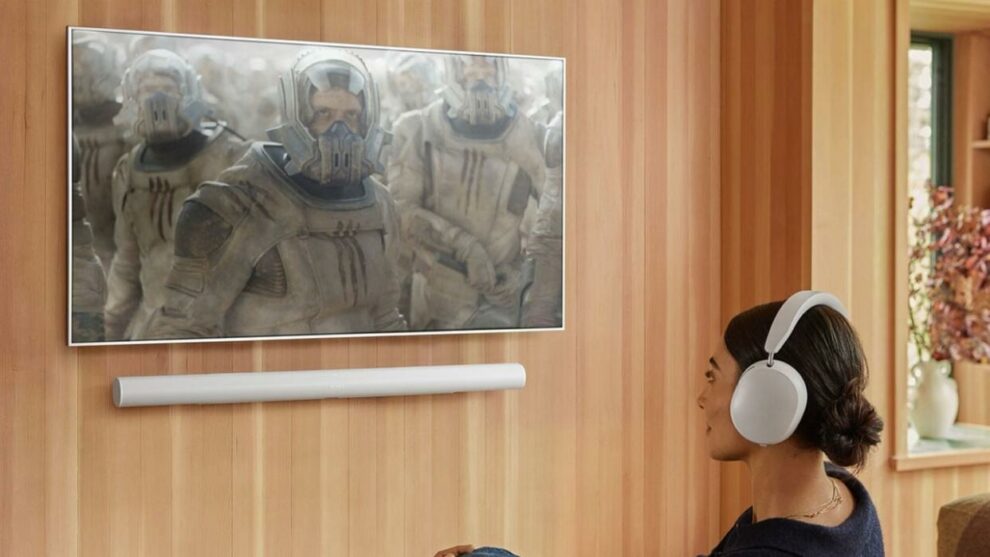Sonos has unveiled its flagship soundbar, the Arc Ultra, marking a substantial leap forward in single-unit home theater sound. Released on October 29, 2024, with a price tag of $999, this premium audio device builds upon its predecessor’s foundation while addressing several key areas for improvement, though one persistent limitation may give potential buyers pause.
The Arc Ultra represents Sonos’ commitment to pushing the boundaries of what’s possible in home audio, delivering an impressive 9.1.4 channel sound configuration that significantly outperforms the original Arc’s 5.0.2 setup. At the heart of this advancement is the innovative Sound Motion driver, a technological breakthrough that achieves remarkable bass performance from a relatively compact form factor, challenging the conventional wisdom that powerful low-frequency response requires substantial speaker size.
In terms of physical design, Sonos has managed to reduce the overall volume by 18% compared to its predecessor, primarily through reductions in height and depth. This architectural refinement makes the Arc Ultra more accommodating for modern TV setups, though it does feature a slightly wider footprint. Available in classic black and white finishes, the soundbar maintains Sonos’ signature minimalist aesthetic with a curved grille that elegantly conceals its sophisticated speaker array. The design philosophy clearly prioritizes discretion, allowing the device to blend seamlessly into any living space while delivering cinema-quality audio.
The sound quality represents a significant evolution in several key areas. Speech clarity, often a critical weakness in home theater systems, shows marked improvement over the original Arc, making even notoriously difficult-to-follow dialogue in Christopher Nolan films more intelligible without requiring additional enhancement features. The Dolby Atmos implementation creates a more expansive and immersive soundstage, with improved positioning of audio effects that, while not quite achieving true surround sound, creates a convincing illusion of three-dimensional audio space.
Perhaps most impressive is the Arc Ultra’s performance with music playback, where the new Sound Motion driver truly shines. The improvement in musical reproduction compared to the original Arc is dramatic, offering fuller, more detailed sound across the frequency spectrum. This versatility makes the Arc Ultra an excellent choice for users who demand high-quality audio performance for both movies and music.
Connectivity and smart features have also seen meaningful updates. The addition of Bluetooth support, a first for Sonos soundbars, provides welcome flexibility for casual listening. The device maintains compatibility with Sonos’ ecosystem, including integration with newer products like the Sub 4 and Era speakers for those seeking to build a more comprehensive home theater system. The company’s TruePlay room-tuning technology has been refined and is now more accessible, with a new “quick” version available on both iOS and Android devices, simplifying the setup process while maintaining effective room optimization.
However, the Arc Ultra carries forward one significant limitation from its predecessor: the absence of HDMI passthrough ports. In an era where HDMI ports on TVs are increasingly precious, particularly those supporting 4K 120Hz, this omission becomes more problematic. While Sonos maintains this decision keeps the product simpler, it effectively transfers the complexity of managing limited HDMI ports to the end user. This limitation is particularly frustrating given that competing products, such as the Sony Bravia Theater Bar 9, offer this functionality at similar price points.
The value proposition of the Arc Ultra is compelling within its specific niche. At $999, it delivers the best single-unit soundbar experience available under the $1,000 price point, offering excellent sound quality and practical design in a premium package. However, consumers should note that similarly priced alternatives, such as the Samsung HW-Q990D, can provide more immersive experiences if they’re willing to accommodate multiple speakers and a separate subwoofer.
Performance testing reveals the Arc Ultra’s capabilities extend beyond simple improvements. The bass response, while not matching the impact of a dedicated subwoofer, provides a more cohesive and balanced low-end experience that integrates seamlessly with the mid-range frequencies. Dolby Atmos effects demonstrate improved precision and positioning, creating a more convincing three-dimensional soundstage that enhances the viewing experience without calling attention to itself.
The setup process has been streamlined, with the new TruePlay quick-tuning option proving particularly effective. The Sonos app, despite some earlier criticism, has matured to provide a stable and intuitive interface for managing the device’s various features and settings. While some control options remain somewhat buried in menus, daily operation requires minimal interaction with the app once initial configuration is complete.
As home entertainment systems continue to evolve, the Sonos Arc Ultra stands as a testament to what’s possible in a single-unit soundbar. It successfully balances the demands of modern home theater with practical considerations of space and aesthetics, delivering a premium audio experience that will satisfy all but the most demanding home theater enthusiasts. While the lack of HDMI passthrough remains a notable drawback, the overall package represents a significant step forward in soundbar technology, making it a compelling choice for those seeking high-quality audio without the complexity of a multi-speaker setup.
The Arc Ultra’s achievement in delivering such comprehensive audio performance from a single unit, combined with its refined design and improved feature set, positions it as a landmark product in the evolution of home audio technology. Despite its one persistent flaw, it sets a new standard for what consumers can expect from a premium soundbar, making it a worthy flagship for Sonos’ audio lineup.
















Add Comment